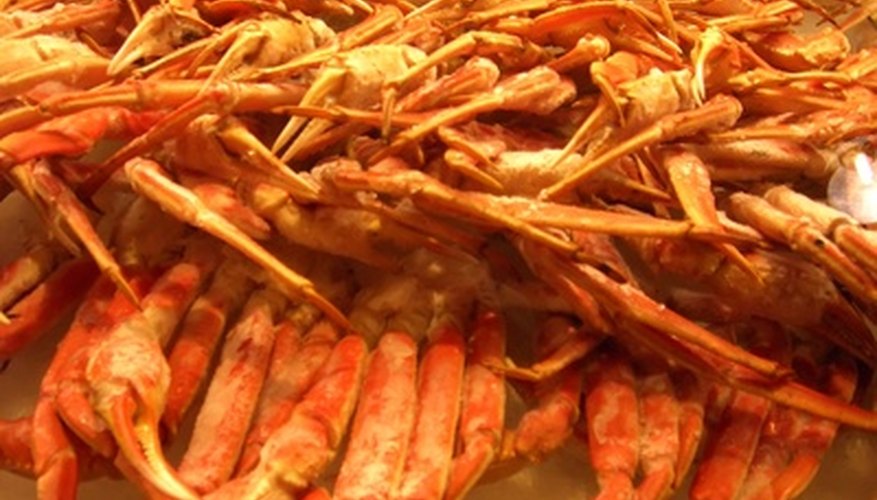Crab fishing has gained national attention due to popular television programs, but the reality is that it ranks among the most dangerous jobs in America, and one with no guarantee of success. The average salary for a crab fisherman in the Alaskan crab industry varies greatly since earnings are often a percentage of a fishing boat's total catch and occur over time periods much shorter than a year.
Earnings
The Alaska Department of Labor and Workforce Development notes wages paid to crew members of crab fishing boats are not bound by minimum wage laws. In many cases, deckhands and other crew members of crab fishing vessels are paid a percentage of the harvest earnings, typically between 1.5 to 10 per cent for newcomers. Some other vessels pay a flat rate of £32 to £65 per day.
- Crab fishing has gained national attention due to popular television programs, but the reality is that it ranks among the most dangerous jobs in America, and one with no guarantee of success.
- In many cases, deckhands and other crew members of crab fishing vessels are paid a percentage of the harvest earnings, typically between 1.5 to 10 per cent for newcomers.
Expenses
Crew members must purchase their own wet weather gear, rubber boots, gloves, wrist covers or sleeves, and a sleeping bag, for a total cost of more than £260. Many boats also charge crew members for operating expenses such as food, fuel, bait and ice. Crew members of seafood fishing vessels must also provide their own commercial fishing licenses, which cost £39 for Alaska residents and £130 for non-residents, according to the Alaska Department of Labor and Workforce Development.
Employment numbers
The number of people working in the crab fishing and harvesting industry in Alaska varies from month to month, but the monthly average in 2008 was 473 jobs. Actual monthly figures ranged from a low of 105 in September 2008 to a high of 842 in October.
